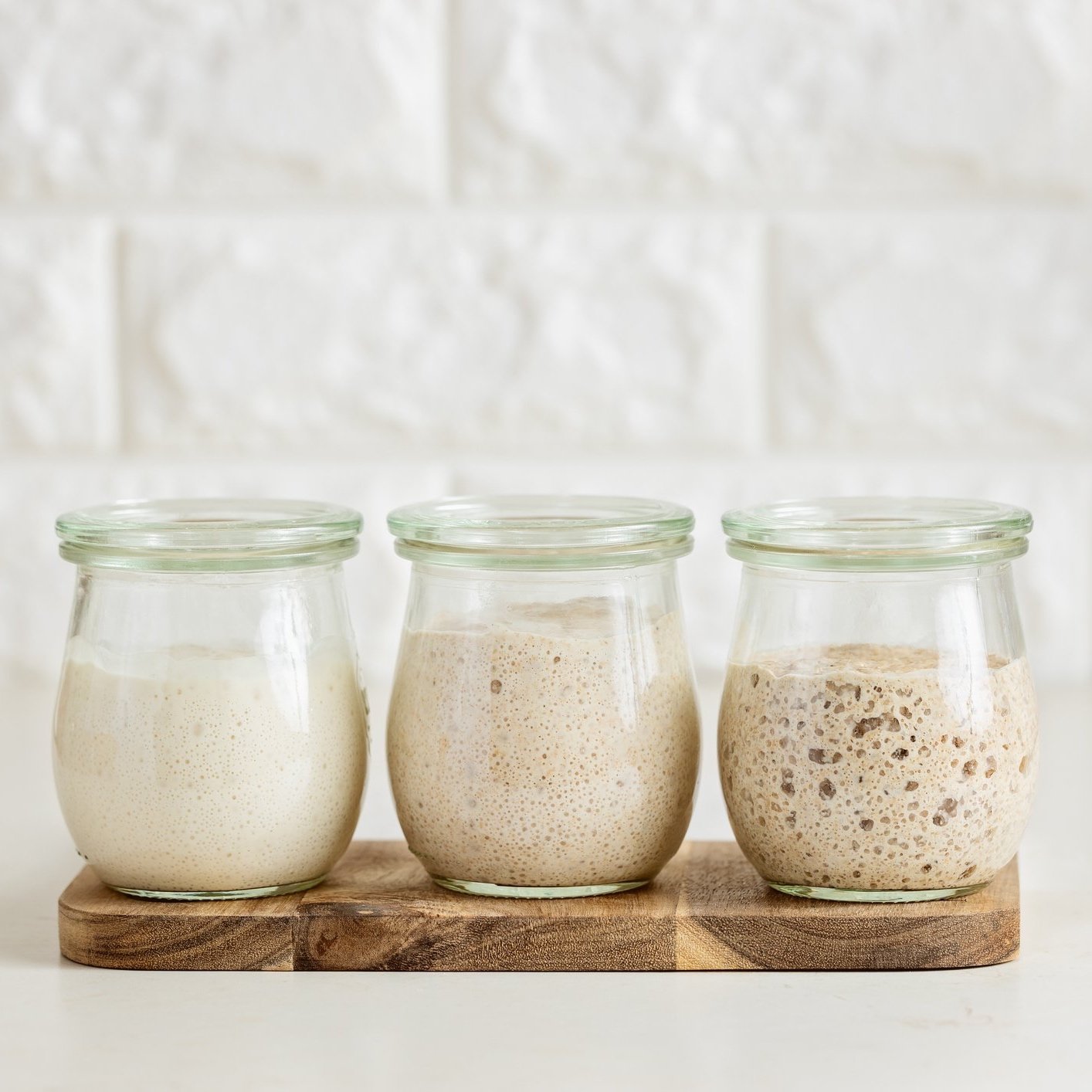Sourdough: It’s Not Me, It’s You (Probably.)
May 30 | Written By Sabrina Huizar
Let’s clear something up: if your sourdough starter isn’t bubbling, it probably didn’t “fail.” It’s just not happy yet.
Even if your dehydrated starter culture didn’t fully revive, that jar of flour and water should still come to life—because wild yeast is everywhere. It’s in the air, it’s on your flour, it’s waiting in the wings. So if you’re getting zero activity? That’s usually not a failed starter. That’s a setup issue.
Let’s walk through it, shall we?
You got the packet. You stirred in the flour. You waited. You peeked. You sniffed. You waited some more. Nothing happened. Now you’re staring into that jar of flour paste like it betrayed you personally.
Temperature: The Not-So-Secret Ingredient
Cold kitchens are the number one reason sourdough starters stall. If your space is hovering around 65°F or below, your starter is basically on pause. It’s not dead—it’s just dormant.
You want to keep it somewhere cozy, ideally between 68°F and 78°F. The top of the fridge, the oven with the light on, or a proofing box all work.
The Usual Suspects: What Might Be Going Wrong
• Feeding too frequently (or not enough)
When your starter’s still in the early stages, it needs time to build strength. Feeding too often can dilute it before it has a chance to get going. On the flip side, neglect won’t help either. Try every 12–24 hours once you see signs of life.
• Water woes
Chlorinated water and icy cold water can slow or shut down your starter. Use filtered or dechlorinated water at room temperature. ROOM TEMPERATURE, not YOUR room temperature. Room temp is usually between 68-78F.
• Too Many Changes, Too Soon
Switching flours every other day? Trying rye, then whole wheat, then back to all-purpose? Slow down. When things aren’t going as planned, it’s tempting to troubleshoot by changing everything at once—but that just confuses your starter. If you do make a change, stick with it for a few days. Starters need time to adjust, and bouncing between fixes too quickly won’t give you a clear picture of what’s actually working.
• Unrealistic expectations
It’s tempting to expect fireworks by Day 2. But sourdough is slow. Some starters take a solid couple of weeks to show strong, consistent activity. That’s normal. Fermentation runs on its own timeline.
So if your sourdough starter is still a sad, lifeless blob and you’re side-eyeing the culture packet like it lied to your face—it’s time for a reality check. Chances are, the culture isn’t the problem. The conditions are.
What to Do Instead
Warm it up.
Find the warmest safe spot in your kitchen and let it chill there (pun intended).Stick to the plan.
Feed once or twice a day with consistent flour and water. Don’t skip. Don’t overdo it.Watch, don’t worry.
If you smell a little tang, see tiny bubbles, or notice the texture changing—it’s working. Even if it’s slow. Keep going.
So no, your starter isn’t broken. It’s not cursed. It’s not mad at you. You just need to tweak the environment and give it time. Fermentation isn’t fussy, but it is particular. Get the basics right, and it will rise to the occasion.
I’ll get off my soapbox now :)
Stay tuned—and stay cultured.
Italian Camaldoli Sourdough Starter Culture
from $15.00
French Parisian Sourdough Starter Culture
from $15.00


